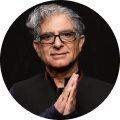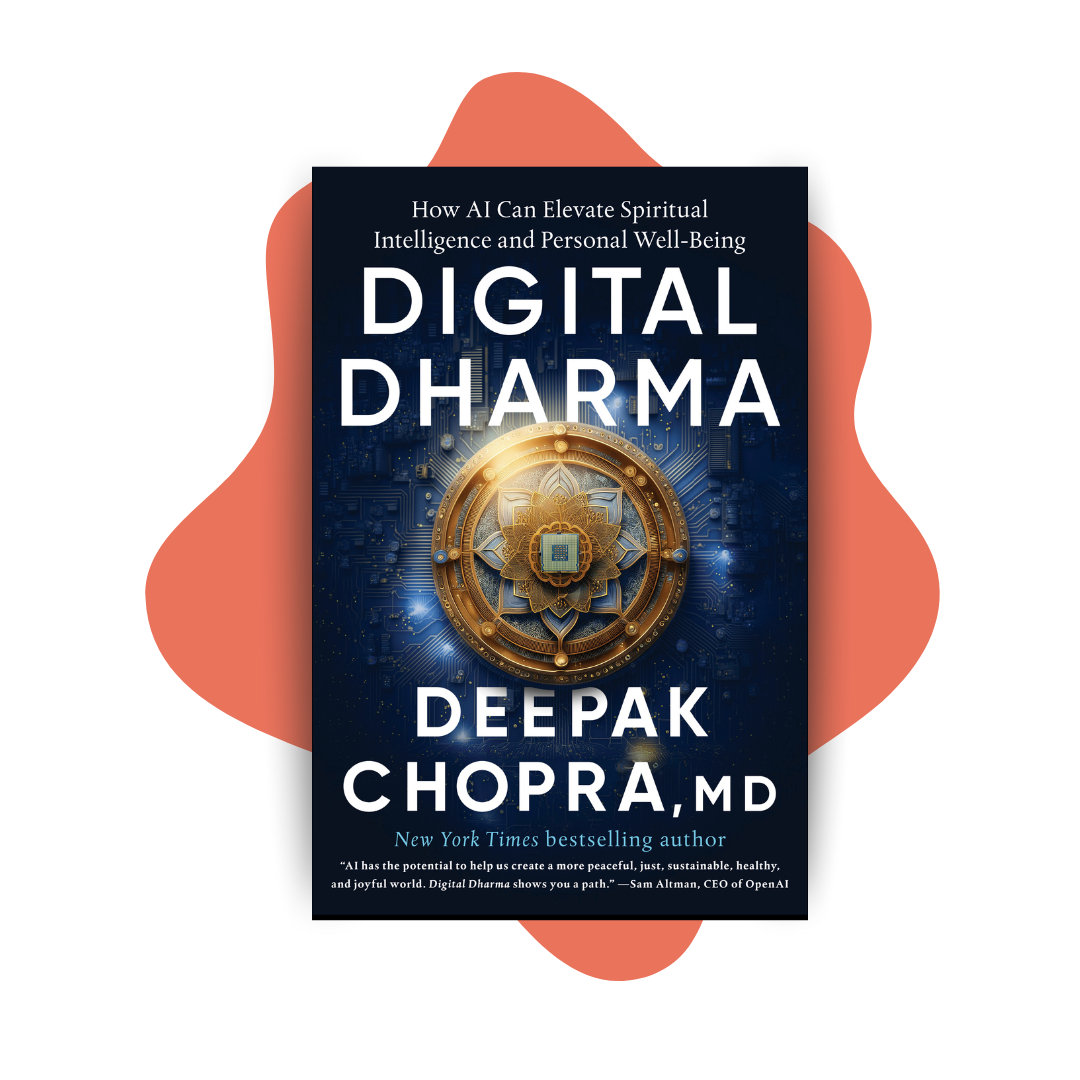A Surprising Way to Overcome the Fear of Death.
When your mind and heart are truly open abundance will flow to you effortlessly and easily.
A fear of death isn’t prominent among the leading causes of anxiety among people as they age—becoming a burden to their children and loneliness rank much higher. Yet psychology has long held that the greatest unconscious fear, hiding beneath the surface of everyday thoughts and feelings, is the fear of death. This is especially evident if your religious beliefs offer Heaven and Hell as the only alternatives after death, or if you are secular and face the possibility of extinction without an afterlife.
In practical terms, the vast majority of people die with a sense of peace and acceptance. But no matter where you fall on the spectrum, it would be beneficial to get past the fear of death. In the tradition of Yoga and Vedanta, this fear is based on an illusion that death exists in the first place. So even if you don’t feel emotional distress about death and dying, clearing up this illusion will bring you closer to reality, an end that is desirable in itself.
First, let’s address the futility of believing in something that cannot be proved. No matter where you stand, your beliefs about death block the possibility of moving forward. The faithful put their trust in their religion; skeptics don’t budge because they disbelieve all evidence that argues against skepticism; and undecideds remain stuck in ambivalence and doubt.
Yet everyone is holding on to their position in the absence of first-hand experience. This renders the afterlife a non-question (i.e., there is no reliable answer). It has been a non-question for as long as recorded history. A tradition of belief or non-belief doesn’t become true just because it has persisted for centuries. The fundamental issue is whether the afterlife can be transformed into a viable question.
I believe it can. In a surprising way, simply defining our terms better is enough. If you don’t specify what consciousness is, you wind up worrying about the survival of the soul, or of “me,” the individual ego-personality. On the other hand, if two people agree upon their definition of consciousness, they will agree on the existence or non-existence of an afterlife. This isn’t an arbitrary judgment. It rests on a definition of consciousness completely detached from all traditions, belief systems, and personal stories.
Every reasonable person, I think, will accept that consciousness in humans is the awareness of two things: that we exist and that we have experiences. By extension, a reality that cannot be experienced is moot. By this measure, UFOs, angels, the afterlife, and the quantum vacuum exist on the same playing field. They are suppositions and inferences.
If we toss out suppositions and inferences, what can we truthfully say about consciousness? By this I mean what can we say that no reasonable person will disagree with? Here is what I’ve been able to convince people to agree with over the years.
- There is only one consciousness. To subdivide consciousness makes no sense. Yet when dealing with everyday life, it’s obvious that we all cling fervently to being individuals, outfitted with “my” family, house, work, body and mind. To crack this allegiance requires arguments like the following:
- When you get wet, do you call it “my” wet? Some things happen to us personally but turn out to have a general existence.
- If you sing “The Star-Spangled Banner” as you walk down the street, did the song walk down the street with you?
- If you imagine your mother’s face, where is that mental image located? The brain has no pictures in it, and no light. When you imagine your mother’s face, you didn’t consult a directory of facial characteristics the way computer recognition software does–you simply called up what you wished to see.
- Where is your self located? There is no neurological evidence of a region of the brain that contains the self, and even if researchers claimed such a region existed, it would have to contain everything attached to you as a self, including your life history.
If these points make sense, then instead of being an isolated consciousness, you are participating in a field of consciousness that is the same for everyone in its essence, even though everyone carves out a unique story as life unfolds.
- The second point is that this one consciousness cannot be located in time and space. It is everywhere, all at once. This point sounds like a hard sell, but in everyday life the argument is convincingly based upon physics, in which fundamental fields are everywhere all at once.
- Cosmologists and quantum physicists agree that spacetime originated in a domain (referred to as the zero point, quantum vacuum state, or the realm of pure mathematics) that isn’t in time and space.
- The entire universeemerged from this pre-created state, which has no qualities we would recognize, such as linear time, dimensionality, solidity, energy, etc.
- All creation stories, scientific or not, converge on the emergence of something out of nothing. Beyond our experience of reality in spacetime, there is a field of infinite potential. The origin of everything is a field of unbounded possibilities.
- As the reality of space, time, matter, and energy appeared and continues to appear, the existence of consciousness must also be accounted for. There are only two viable possibilities that are taken seriously. The “matter first” position holds that mind has its origins in matter and energy (to which some theorists add information). The “mind first” position holds that consciousness is the source of everything, including matter and energy.
- If there are only these two positions, how do we decide between them? In fact, we don’t have to. If there is only one consciousness at the basis of creation, it must be both material and mental. Otherwise, creation would have to be divided between one reality “out there” and another reality “in here.” In everyday life we casually assume that these two realities occupy different domains, the one physical and objective, the other mental and subjective. This habit, known as duality, is actually the illusion that lies behind fear of death.
Knowing that our bodies will perish, we fear that the mind must suffer the same fate. But “one consciousness” has no boundaries, like the quantum field or the gravity field. There is no validity to being born and dying, since both pertain to end points and boundaries that consciousness isn’t subject to. Also, by seeing through the illusion of two-reality/dualism, we ditch some vexing non-questions. For example, physicalists are certain that the brain creates the mind. But no one has ever offered the slightest proof that the ordinary organic molecules inside the brain, including simple sugar (glucose) is any different form those same organic chemicals in a leaf, lion’s claw, tree trunk, or rotting corpse. It is a non-question to ask how brain chemicals learned to think. They didn’t.
The creation of “something out of nothing” has been lurking in the background as the ultimate mystery, yet with reference to everyday life, the mystery is solved. If someone whispers “I love you” in your ear, the mind-body system will display hundreds of changes dissimilar to what occurs if the whispered words are “I have a gun pointed at your heart.” The deciding factor isn’t material in the slightest; it consists of mental activity, invisible impulses in consciousness. The “nothing” at the origin of creation isn’t nothing. It is consciousness on the move at every level of Nature form subatomic particles to galaxies, from single thoughts to the corpus of human civilization.
It is far from impossible to convince reasonable people that these points are true, and each point stems from defining consciousness in the most basic, intuitively validated way. As to the specific issue of an afterlife, let’s review what lies on the side of consciousness continuing after dropping the physical body:
- Consciousness, being nonlocal, is not subject to birth and death.
- Even in physicalist terms, there must be a pre-created state beyond time and space. Birth and death, being aspects of linear time, are not present there.
- An argument can be mounted that certain abstract experiences, such as mathematics and information, have an indestructible aspect, again immune to birth and death.
- Body, mind, and the world “out there” cannot be divorced from conscious experience. The only reasonable location for all of them is in consciousness itself.
- If all of the above are true, then nothing exists except as a modified state of consciousness. Some of these states we identify as matter and energy, which seem separate from consciousness, but this is simply a habit built up for cultural reasons. There have been societies where “mind first” was just as self-evident as “matter first” is to us.
Having laid out, in truncated form, the argument for consciousness as the basis of reality, not everyone may be willing to follow the clues that lead to an afterlife. But that isn’t as important as realizing that we have tended to ask the wrong questions. One can devote a book to untangling the various possibilities for consciousness to persist after the end of the body (I wrote one, titled Life After Death). In the end, however, the stubborn way that old stories cling to us, and we to them, muddies the issue. Until we all are willing to think fresh thoughts, our consciousness will remain constricted. Fear is a residue of constricted awareness, including fear of death. Only the expansion of consciousness can finally eradicate it.
DEEPAK CHOPRA MD, FACP, FRCP, founder of The Chopra Foundation, a non-profit entity for research on well-being and humanitarianism, and Chopra Global, a whole health company at the intersection of science and spirituality, is a world-renowned pioneer in integrative medicine and personal transformation. Chopra is a Clinical Professor of Family Medicine and Public Health at the University of California, San Diego and serves as a senior scientist with Gallup Organization. He is the author of over 90 books translated into over forty-three languages, including numerous New York Times bestsellers. His 91st book, Total Meditation: Practices in Living the Awakened Life explores and reinterprets the physical, mental, emotional, relational, and spiritual benefits that the practice of meditation can bring. For the last thirty years, Chopra has been at the forefront of the meditation revolution. His latest book, Living in the Light co-authored with Sarah Platt-Finger. TIME magazine has described Dr. Chopra as “one of the top 100 heroes and icons of the century.” www.deepakchopra.com

